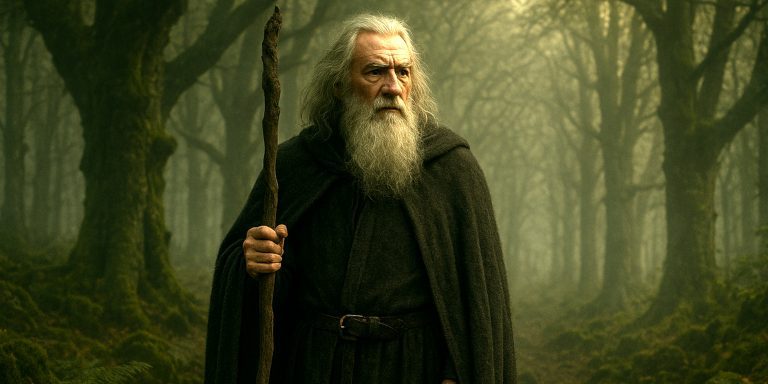
Freydís Eiríksdóttir remains one of the most contentious and intriguing figures from the Viking Age. Often overshadowed by her more famous father, Erik the Red, and half-brother, Leif Erikson, her story is a blend of fierce determination, violence, and the complicated status of women in Norse society. The tales we have paint two very different portraits of Freydí, one as a fearless warrior standing alone against enemies, the other as a ruthless and calculating figure in pursuit of power.
Historical Background
Freydís lived around the turn of the 11th century, during the height of Norse exploration in the North Atlantic. She was born in Iceland and later travelled to Greenland with her father as part of his colonisation efforts. Freydís’s story features most prominently in two key sources: The Saga of the Greenlanders and The Saga of Erik the Red, both part of the Icelandic saga tradition.
These sagas, while not historical documents in the modern sense, are still vital cultural records. They were written in the 13th century, long after the events they describe, and blend oral tradition with literary invention. Freydís’s character is interpreted very differently in each.
Freydís in the Saga of the Greenlanders
In this version, Freydís is portrayed in a deeply negative light. She conspires with her husband to join a voyage to Vinland, the Norse name for the areas explored along the North American coast. Once there, Freydís falls out with two Icelandic brothers, Helgi and Finnbogi, who were part of the expedition.
According to the saga, Freydís lies to her husband, claiming she was assaulted by the brothers. She then incites him and his men to kill them. When they refuse to kill the brothers’ wives, Freydís reportedly takes an axe and kills the women herself. Upon returning to Greenland, she tries to hide the incident, but the story spreads.
This portrayal paints her as deceitful and brutal, and the saga ends with condemnation: no one thought well of her afterwards.
Freydís in the Saga of Erik the Red
Here, the tone is quite different. Freydís is depicted as brave and formidable. During a battle with Indigenous peoples, referred to by the Norse as Skrælingjar, the Norse settlers are driven back. Freydís, pregnant at the time, refuses to flee.
She scolds the retreating men for cowardice, picks up a sword from a fallen comrade, and reportedly bares her chest while slapping it with the blade in defiance. The enemy retreats in fear, and her boldness is celebrated.
This account casts Freydís as a kind of Viking heroine, a woman who defied gender norms and faced danger head-on when others faltered.
Arms and Armour
There is no surviving archaeological record directly linked to Freydís, but the sagas offer some detail. The account of her taking up a sword and standing her ground implies she was familiar with weapons, at least in an emergency. In Norse culture, women were generally not front-line warriors, but there is evidence, both literary and archaeological, of elite women buried with weapons.
The sword she wielded in the saga was likely a typical Viking age single-handed sword, probably with a broad blade, fuller, and iron pommel. Her enemies, the Skrælingjar, would have fought with bows, spears, and clubs.
Legacy and Cultural Reappraisal
Freydís’s dual legacy as both a heroine and a villain reflects the complexity of saga literature. The contrast between the two accounts may reflect deeper cultural tensions about gender, power, and colonial ambition. It’s also possible that one of the stories confused Freydís with another historical figure, or that the negative portrayal was a deliberate effort to undercut a powerful woman’s reputation.
Modern portrayals in TV series and games often pick and choose between these versions, sometimes emphasising her strength and sometimes her savagery. Whether she was a misunderstood leader or a violent opportunist depends on which lens you apply.
Latest Archaeology and Research
To date, there is no physical evidence that confirms Freydís’s presence in Vinland or Greenland, though sites like L’Anse aux Meadows in Newfoundland have demonstrated Norse activity in North America around the year 1000. Continued excavation and analysis in this area might yield more context for the expeditions mentioned in the sagas.
Where to See Artefacts and Related History
- L’Anse aux Meadows, Newfoundland – A UNESCO World Heritage site with reconstructions of Norse buildings and exhibits on Viking exploration.
- National Museum of Denmark, Copenhagen – Features Norse artefacts, including weapons, jewellery, and ship models.
- Reykjavík Maritime Museum, Iceland – Offers exhibits on Norse exploration, including Greenland and Vinland voyages.
- Greenland National Museum, Nuuk – Holds items from Norse settlements and reconstructions of the Erik the Red period.
Final Thoughts
Freydís Eiríksdóttir is neither easily heroic nor simply villainous. She stands as one of the few women in Viking saga literature who leads, commands, and kills. Whether that makes her a pioneer, a warning, or a product of her time depends on how the stories are told, and who’s telling them. What is certain is that Freydís, unlike many of her female contemporaries, refuses to be forgotten.
Watch the documentary:



